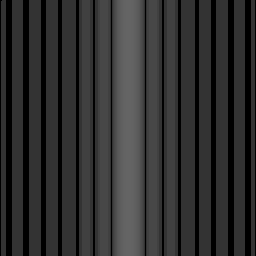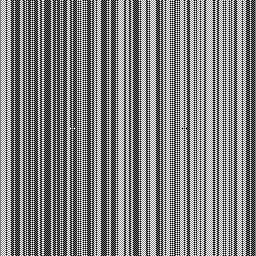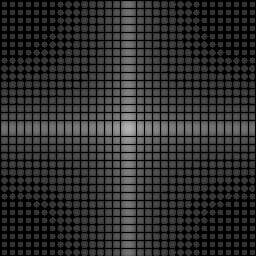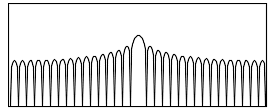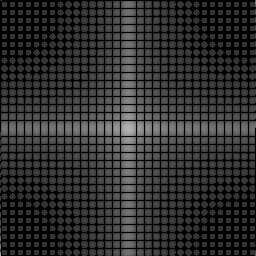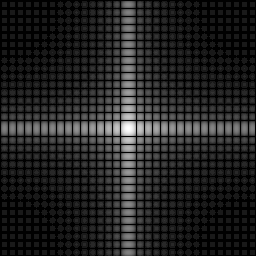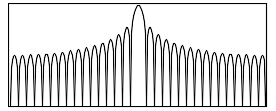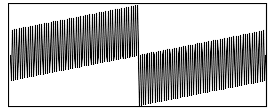FFT phase ?
Posted: 2012-01-03T04:49:56-07:00
Hi,
I am having some doubts as to whether -fft is producing the correct phase data. (Or perhaps documentation is incomplete as to what it is _supposed_ to produce).
I'm looking at the DFT of simple straight line segment that can be used to simulate a motion blur:

I reproduce the above image using IM then do the DFT in phase/magnitude and get the two layers as png files.
The magnitude looks credible as basically sinc-like of expected proportions. However I'm rather unsure about the phase:

Latest on-line doc tells me the following:
I have several problems here. First it seems clear that both non_HDRI and HDRI are being scaled , or perhaps the layer is not being scaled but is scaled in writing, I don't know.
Second , this image has only three values: black and white and 50%grey. This would seem an improbably result unless this is just near zero noise being scaled up , even then it's dubious.
Finally , unless I am confusing thing I have other sources that indicate the imaginary part is a cosine and that makes the phase a smoothly rotating angle not this staccato all or nothing.
http://mathworld.wolfram.com/SincFunction.html says : {sinc(x),cos(x)}
also I have a locally built DFT routine released by arachnoid, that work very well on 1-D (audio) signals.
http://www.arachnoid.com/signal_processing/fft.html
Using the latter to transform a rectangular step I get pure cosine in the imaginary.
Using IM , I get a black square.
All this suggests that some assumptions about the result are being made as "shortcuts" in the code. I'm wondering if they are correct or some undocumented modifications are being imposed of the DFT.
This may be "small but acceptable" errors and maybe not . When chasing out ringing in FFT processes you need to be nit-pickingly precise. Undocumented features (if that is the case) and incorrect statements in the doc do not help help diagnose problems.
Any clarifications as to what extent all this is a bug or a feature would be helpful.
regards.
I am having some doubts as to whether -fft is producing the correct phase data. (Or perhaps documentation is incomplete as to what it is _supposed_ to produce).
I'm looking at the DFT of simple straight line segment that can be used to simulate a motion blur:

I reproduce the above image using IM then do the DFT in phase/magnitude and get the two layers as png files.
Code: Select all
length=15;
name=motion$length;
convert -size ${ww}x${ww} xc:black -fill white \
-draw "line $(($half-$length/2)),$half $(($half+$length/2)),$half" -alpha off \
${name}.png
mean=`convert ${name}.png -format "%[mean]" info:`
mask=$name.png
ww=`identify -format "%w" $mask`
half=$(($ww/2))
# same as above to get four images Real,Imaginary
convert \( $mask -roll -${half}-${half} -fft -level 0x$mean \) \
\( cameraman.png -fft \) \
cameraman_${name}-fftMP.png
convert \( $mask -roll -${half}-${half} -fft \) \
${name}-fftMP.png

Latest on-line doc tells me the following:
I'm using a HDRI build , so this statement (or it's implied inverse) is not true. The above plot is not in the range 0-2*pi !http://www.imagemagick.org/script/comma ... 0na4pidop4
Phase values nominally range from 0 to 2*π, but for non-HDRI compilations of ImageMagick, the phase image is scaled to span the full dynamic range.
Code: Select all
convert -version
Version: ImageMagick 6.7.4-0 2012-01-03 Q16 http://www.imagemagick.org
Copyright: Copyright (C) 1999-2011 ImageMagick Studio LLC
Features: HDRI
Second , this image has only three values: black and white and 50%grey. This would seem an improbably result unless this is just near zero noise being scaled up , even then it's dubious.
Finally , unless I am confusing thing I have other sources that indicate the imaginary part is a cosine and that makes the phase a smoothly rotating angle not this staccato all or nothing.
http://mathworld.wolfram.com/SincFunction.html says : {sinc(x),cos(x)}
also I have a locally built DFT routine released by arachnoid, that work very well on 1-D (audio) signals.
http://www.arachnoid.com/signal_processing/fft.html
Using the latter to transform a rectangular step I get pure cosine in the imaginary.
Using IM , I get a black square.
Code: Select all
convert \( $mask -roll -${half}-${half} +fft \) ${name}+fft.pngThis may be "small but acceptable" errors and maybe not . When chasing out ringing in FFT processes you need to be nit-pickingly precise. Undocumented features (if that is the case) and incorrect statements in the doc do not help help diagnose problems.
Any clarifications as to what extent all this is a bug or a feature would be helpful.
regards.
